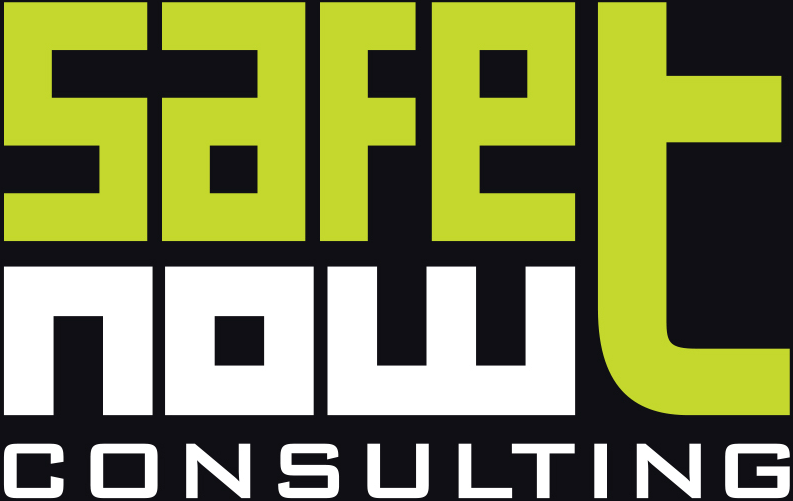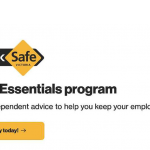Health and safety legislation requires employers to provide and maintain, so far as reasonably practicable, a safe work environment for all workers, including independent contractors and subcontractors. This article provides a step-by-step approach to implementing an effective contractor management system to ‘carve out’ your workplace safety obligations.
A contractor is a person or business engaged by another person or buinsess to undertake specific duties/tasks subject to a contractual agreement. Contractors are engaged in most instances to perform work that requires specialist skills. However, in a number of cases such work often involves high risk. For example, a contractor may be contracted to carry out work in a confined space, perform work at height (i.e. use of boom lift, scissor lift, work on a roof), the removal of asbestos, rigging operations, mobile plant operation or electrical work.
The nature of such agreements has meant that the contacting out of specific specialised work tasks by employers to independent contractors or subcontractors has been common practice for some time now. However, what employers must understand is that a business that engages or is caused to engage an independent contractor or subcontractor, cannot contract out their legislative health and safety obligations. An employer still has the primary duty of care to provide and maintain a workplace that is safe and without risk to health as far as reasonably practicable.
As such, the establishment of a contractor management system is essential for any employer to effectively discharge their health and safety duties to an independent contractor or subcontractor. The steps presented below will assist employers to effectively ‘carve out’ a contractor management system to manage the duties owed to an independent contractor and subcontractor under health and safety legislation.
STEP-BY-STEP: IMPLEMENTING A CONTRACTOR MANAGEMENT SYSTEM
Step 1: Establish a clear of scope of works for each task you are contracting them to carry out
If you are seeking to engage contractors, you must set out a clear scope of work that you require them to undertake. Your scope of work will include a task description (e.g. is the contractor providing a mobile crane service or demolishing a structure?), and a requirement for the contractor to separate the task into key components. The contractor must also detail the hazards that may be encountered and the risk associated with such hazards, including:
- access requirements to complete the task, e.g. will the contractor need to work at height, in a confined space, or will there be restricted access to the location where they perform tasks;
- potential hazards associated with the task, e.g. will they come into contact with hazardous energy sources, operate mobile plant, be exposed to hazardous substances or materials, be required to perform hazardous manual tasks;
- supervision requirements, i.e. how will the contractor supervise their people undertaking the task;
- emergency planning requirements, e.g. is there a fall rescue plan for workers working at height or an entry/non-entry rescue plan if workers are trapped in a confined space;
- qualifications necessary to undertake the task; and
- risk assessment of the work that considers all safety, business and related risk, and where possible, shift the responsibility for the risk to the contractor;
- the specific risk control measures that the contractor shall implement e.g. establishment of isolation plan for hazardous energy control that details how an energy source is to be isolated, secured (lock or lockable device) and methods by which any the effectiveness of the isolation shall be tested and any residual energy dissipated.
Step 2: Put in place an independent contractor agreement
You must have a formalised independent contractor agreement with the contractor. This should be in place prior to the work being started. You must engage a qualified legal provider to draft the agreement.
The agreement will include:
- the name of the entity engaging the services of the contractor;
- the contractor’s trading information;
- the worker/s and any sub-contractors that are to be engaged;
- terms of the agreement between the employer and contractor;
- dates when will work on tasks commence and be completed.
- descriptions of the services the contractor will provide, including whether they will provide:
- a safe working environment (include reference to the contractor’s requirement to enforce and monitor their own safe systems of work, and ensure that any plant, substances and equipment are used in a safe manner;
- any required competency-based training to their workers;
- any necessary instruction and supervision to their workers;
- safe work method statement (SWMS) or job safety analysis requirements. A safe work method statement (SWMS) is required for all high-risk construction work (e.g. construction work that involves a risk of a person falling more than two metres, demolition works, construction work that involves or may involve the disturbance of asbestos). A SWMS is a document that details the high-risk construction work to be undertaken at a workplace, the hazards and risks arising from these activities and the measures to be taken to control the risks. Of recent times, most employers have required independent contractors to establish a SWMS for all high-risk works undertaken onsite as a minimum requirement, even for those tasks that do not involve construction work (i.e. work performed at height (i.e. crane maintenance), works performed in a confined space (i.e. gas burner maintenance).
- descriptions of the services the contractor will provide, including whether they will provide:
*NOTE: SWMS are required to be compiled for each of the eighteen prescribed high-risk construction work activities are referenced in Appendix B of the SafeWork Australia Code of Practice: Construction Work (2013).
- terms for monitoring of services, i.e. will the contractor provide the employer the right to monitor the effectiveness of the contractor’s safety systems and comply with any requests for documents or information required by the employer;
- grounds for suspension of services;
- safety performance measures;
- insurance requirements; and
- grounds for termination of agreement.
Step 3: Conduct a contractor verification process
The contractor verification process should be established as part of the formalised independent contractor agreement. Contractor verification requires the contractor to submit the following information to the employer for review prior to engagement:
- their trading details, including business/trading name, Australian business number (ABN) or Australian company name (ACN), registered address of the business address, contact persons, contact numbers and email addresses;
- description of services to be provided in accordance with scope of works issued by the employer;
- insurance details including certificates of currency;
- their health and safety management system;
- relevant background information including whether works have been performed previously for the employer by this contractor;
- subcontractors they will use to perform the services;
- their health and safety policy, drug and alcohol policy, and bullying and harassment policy;
- roles and responsibilities of the contractor and its workers (including any subcontractors engaged by the contractor);
- skills and competencies of the contractor and its workers (including any subcontractors engaged by the contractor);;
- supervision and monitoring the contractor will adopt with its workers and any subcontractors that may be engaged by the contractor;;
- consultation processes the contractor will undertake with its workers and any subcontractors that may be engaged by the contractor;
- risk management systems the contractor will establish, i.e. for working at height, with plant/equipment, regarding hazardous energy, hazardous substances, high-risk work, manual handling, noise and hot work;
- incident reporting and investigation systems the contractor will establish;
- emergency management systems during the performance of the specified services;
- referees in respect of past safety performance and evidence of past compliance on like jobs with the contractor’s safety management system; and
- the declaration signed by the contractor submitting the contractor verification information.
Step 4: Ensure the contractor submits an SWMS or job safety analysis
You must ensure that a contractor submits a SWMS or job safety analysis for review prior to starting any services as specified within the formalised independent contractor agreement.
The SWMS or job safety analysis must detail:
- the specific task sequence by which the contractor will perform a task;
- the hazards associated with each task sequence/step, including risk-rating (i.e. extreme/high/medium/low) when considering risk consequence and the likelihood of such a consequence occurring;
- the risk control methods to be adopted for each hazard identified for each task;
- an assessment of any potential interaction that may occur with other contractors or workers at the site, how the risk management responsibilities associated with such interactions will be shared and who will be accountable for the implementation of risk control measures; and
- the contract personnel assigned responsibility to ensure that the specified risk control methods are implemented and monitored;
- a declaration register for signing prior to the commencement of works on each day that works are to be undertaken by the contractor’s workers.
Step 5: Provide the contractor with a formal induction
You must deliver a formalised health and safety induction to each contractor prior to the commencement of works. The basic components of a contractor induction include:
- employer policy documentation;
- hazard reporting requirements;
- incident reporting requirements;
- risk management requirements, including how the contractor will manage:
- hazardous energy sources;
- work at height;
- entry into a confined space;
- hazardous substances/dangerous goods
- hot work;
- manual handling;
- traffic management including powered mobile plant; and
- personal protective equipment; and
- emergency preparedness information including evacuation procedures.
Step 6: Establish a contractor register
You must establish a formalised contractor register for all contractors that have been authorised to perform works. Authorised contractors are those who have signed an independent contractor agreement and submitted all required documentation for review and approval prior to the commencement of works.
A contractor register should include:
- the contractor’s business trading name;
- their insurance certificates of currency, including their workers’ compensation provider, date of issue and expiry;
- their public and products liability provider, date of issue and expiry;
- date of submission of SWMS or job safety analysis;
- date of SWMS or job safety analysis review; and
- date they completed the contractor induction.
Step 7: Review contractor performance
Pursuant to the scope of works and contract, you must review contractor performance at dedicated intervals. This can be done via site meetings, audits and other means of review. Contractors must have a safety reporting system that measures their performance against the safety management system, which informs the host they are doing everything that is reasonably practicable to provide a safe system of work, and therefore evidencing the carve out as a matter of law.
SUMMARY
All employers who engage contractors must ensure that sound health and safety systems are established to manage and control the contractors. The duty to provide a safe working environment is one that cannot be contracted out and as such, employers must ensure that strict diligence is applied to manage the risk associated with the engagement of contractors.





